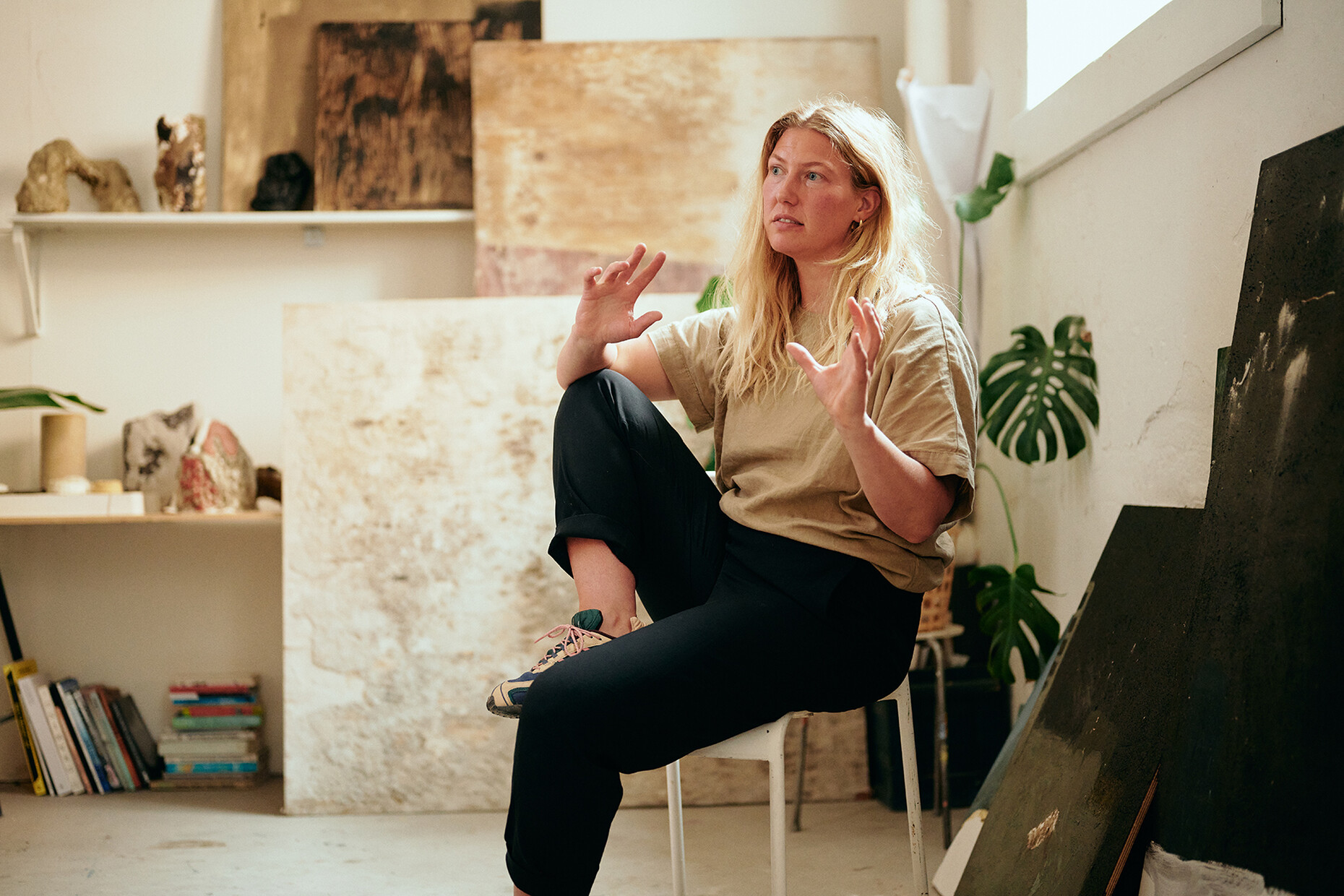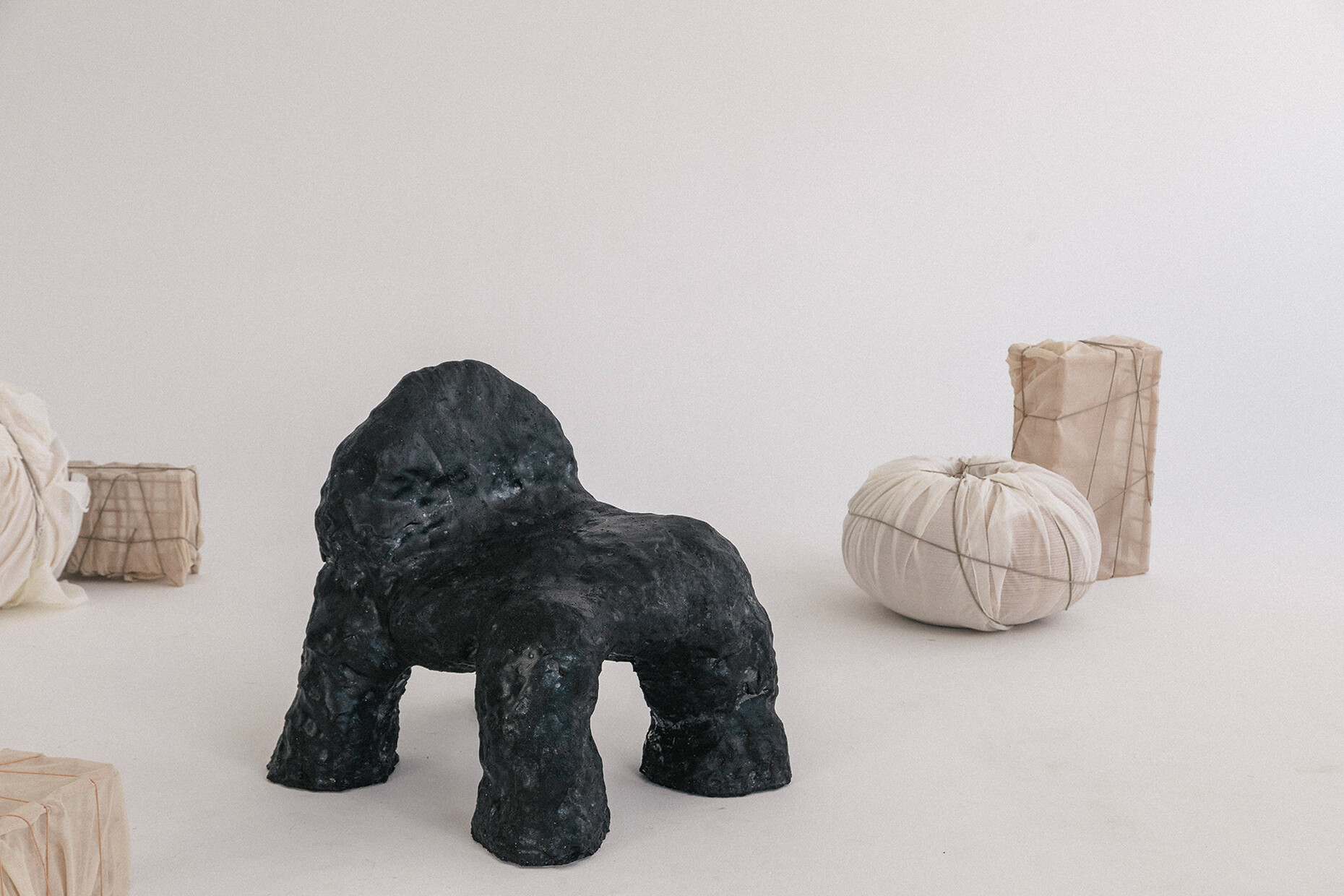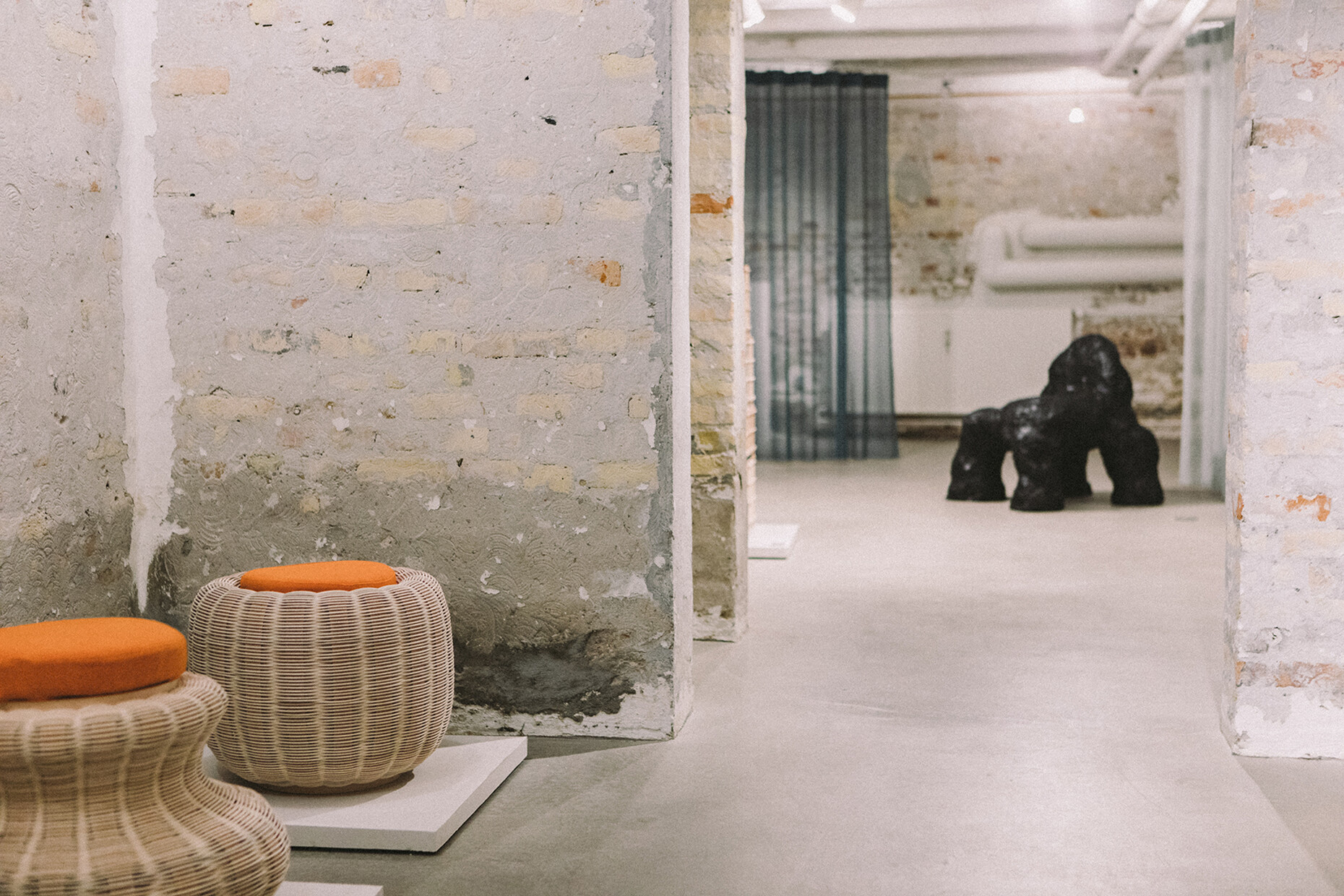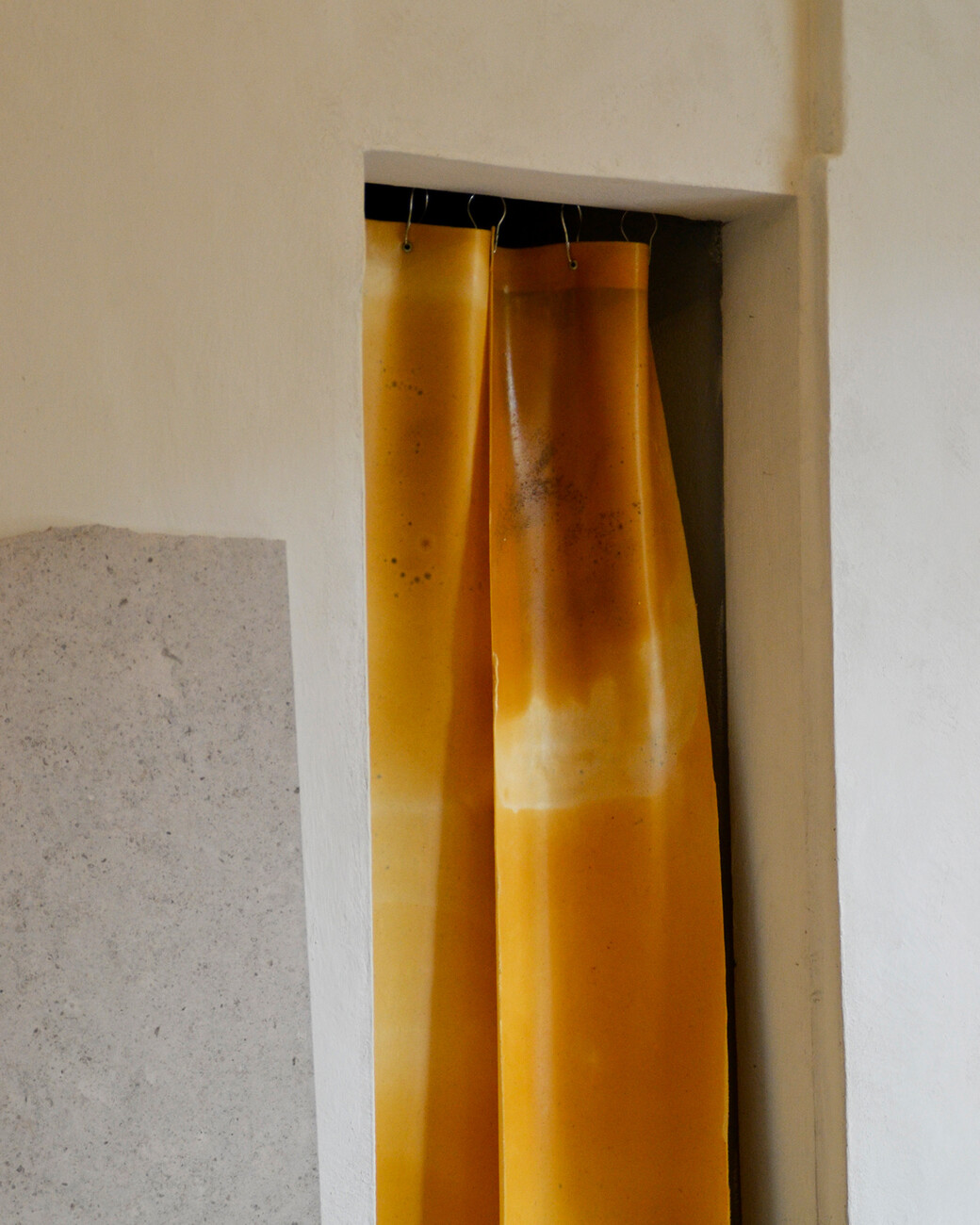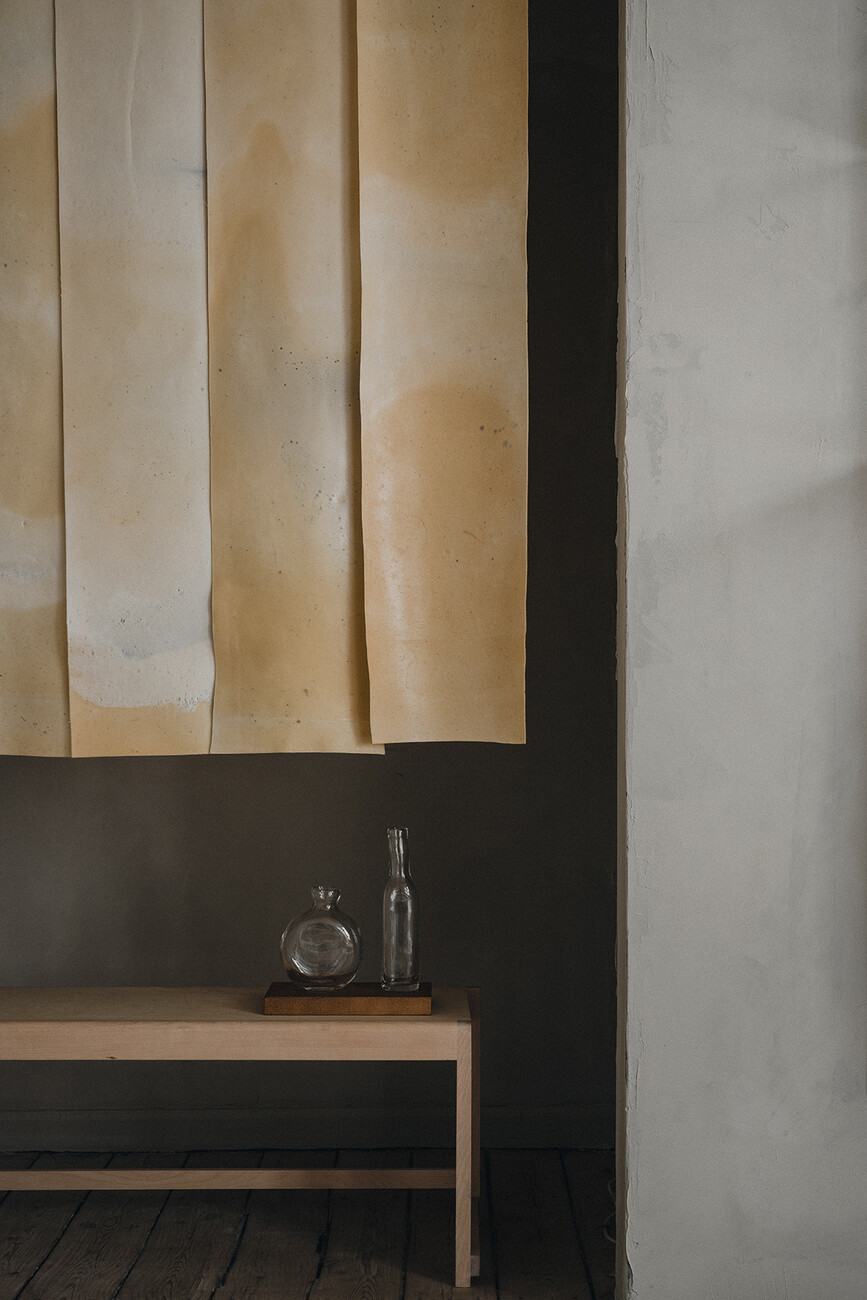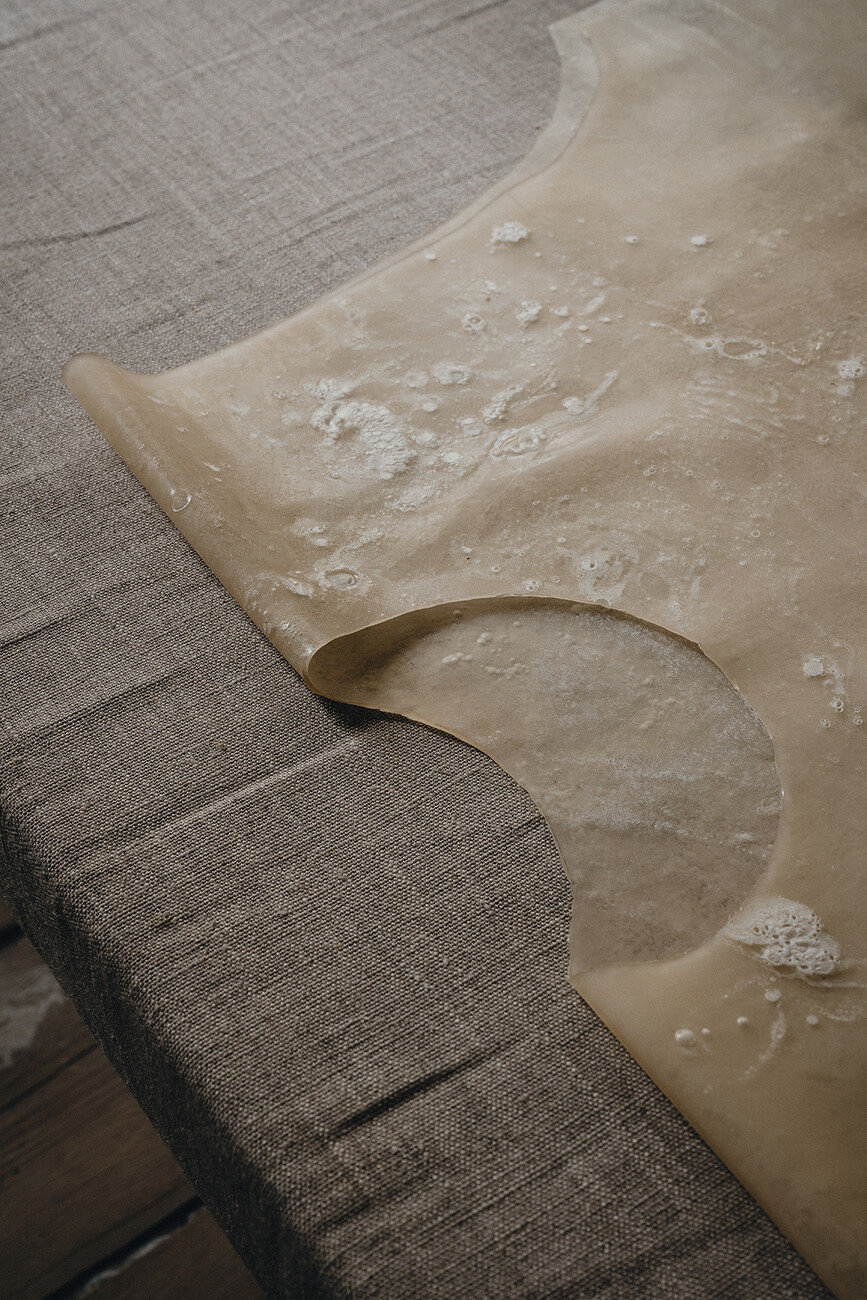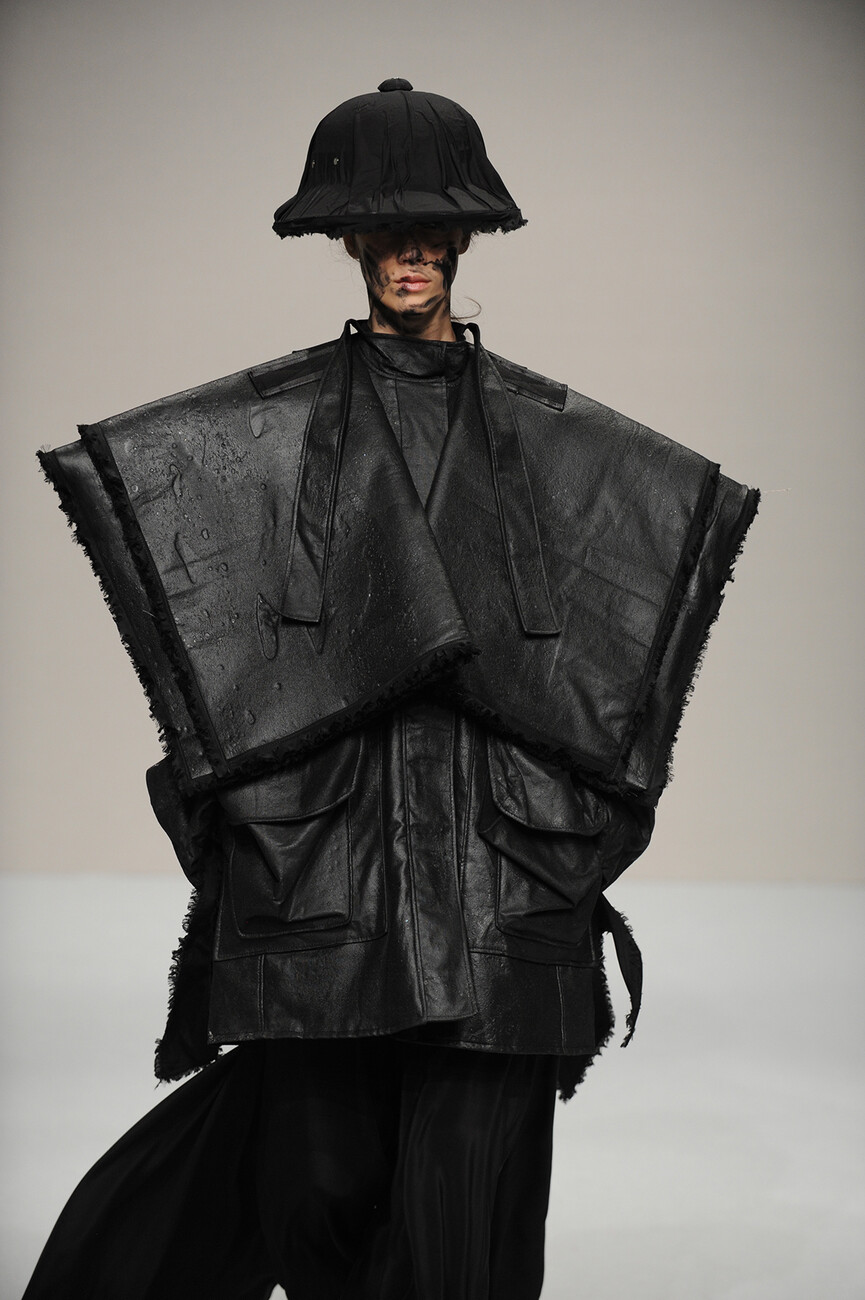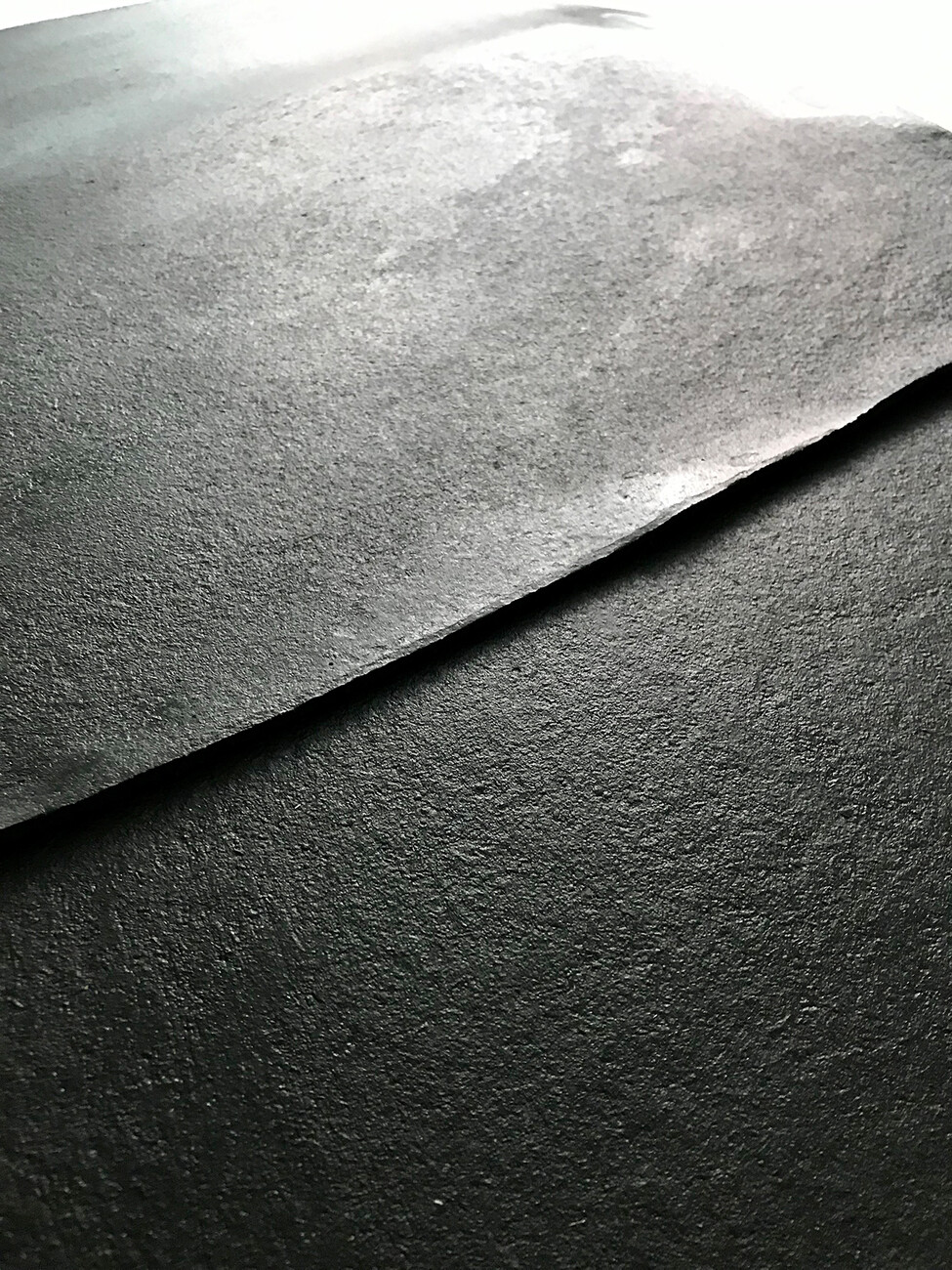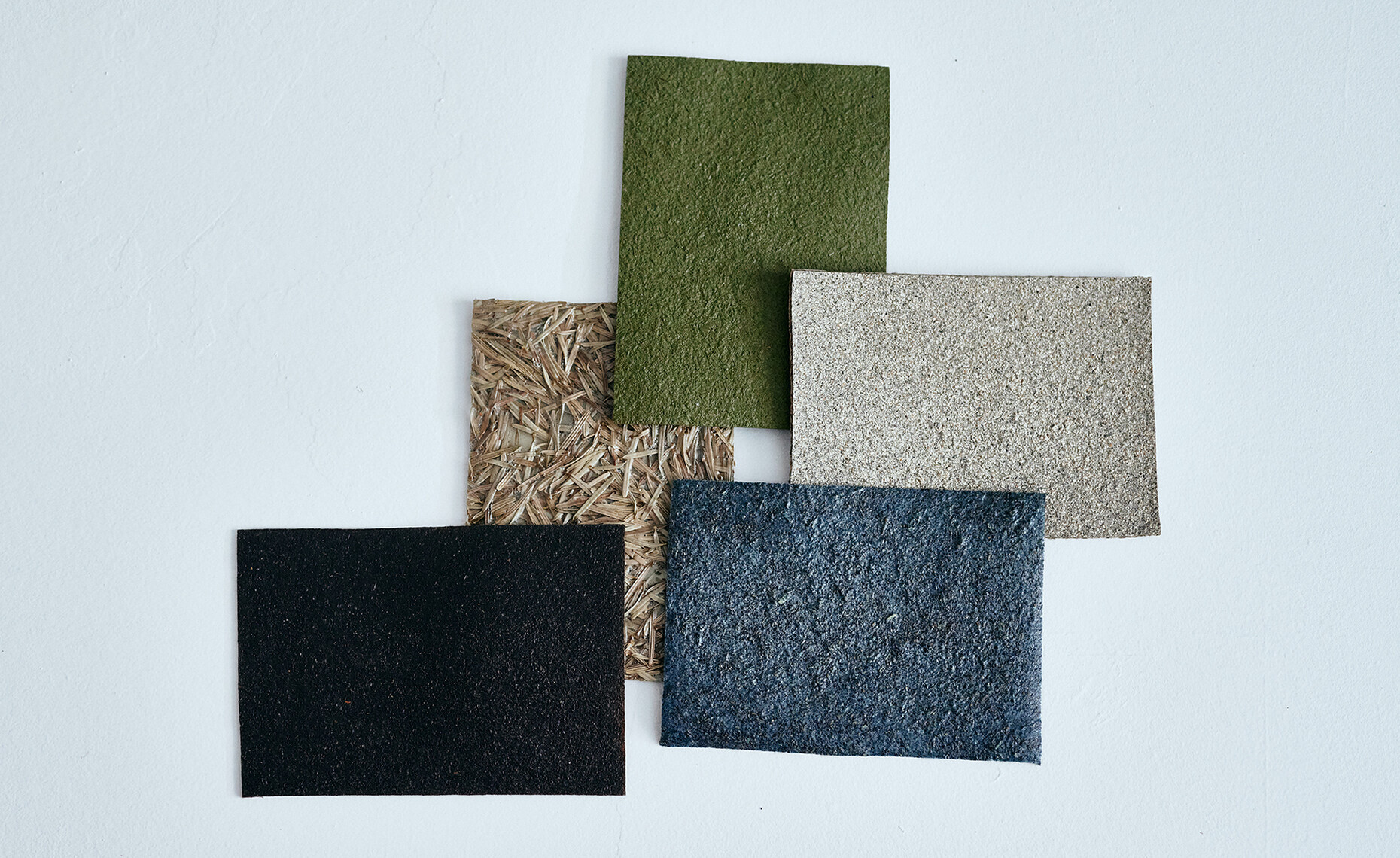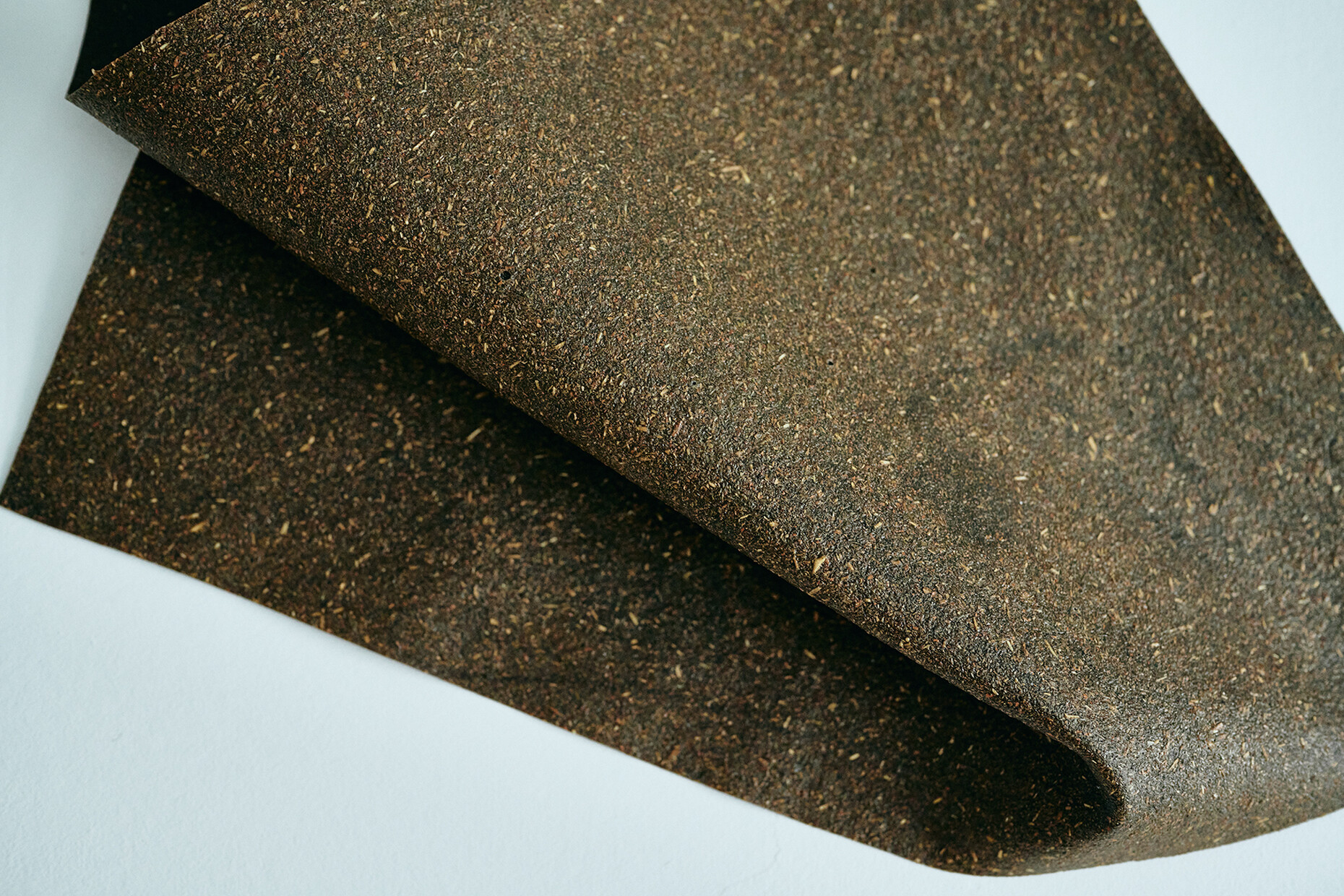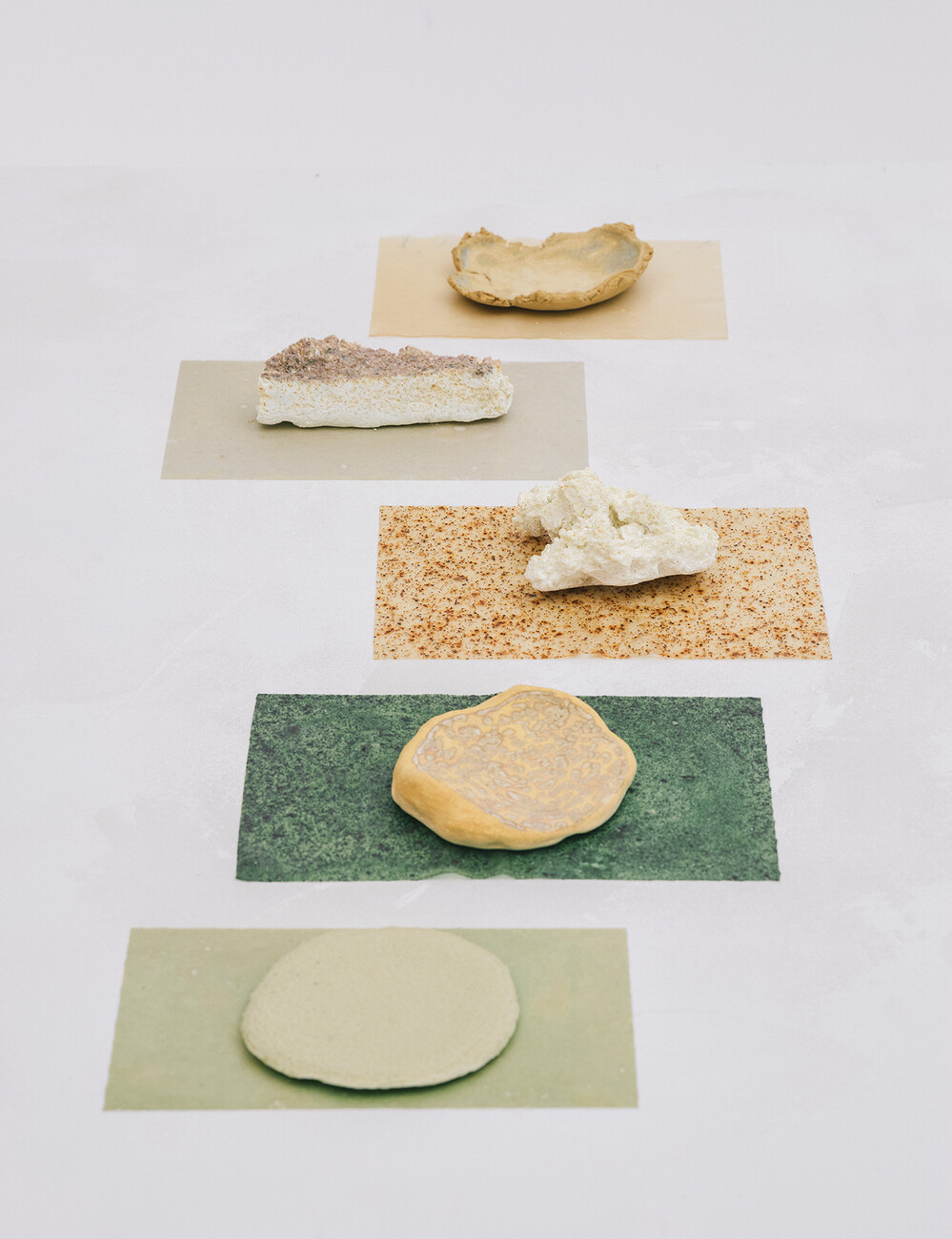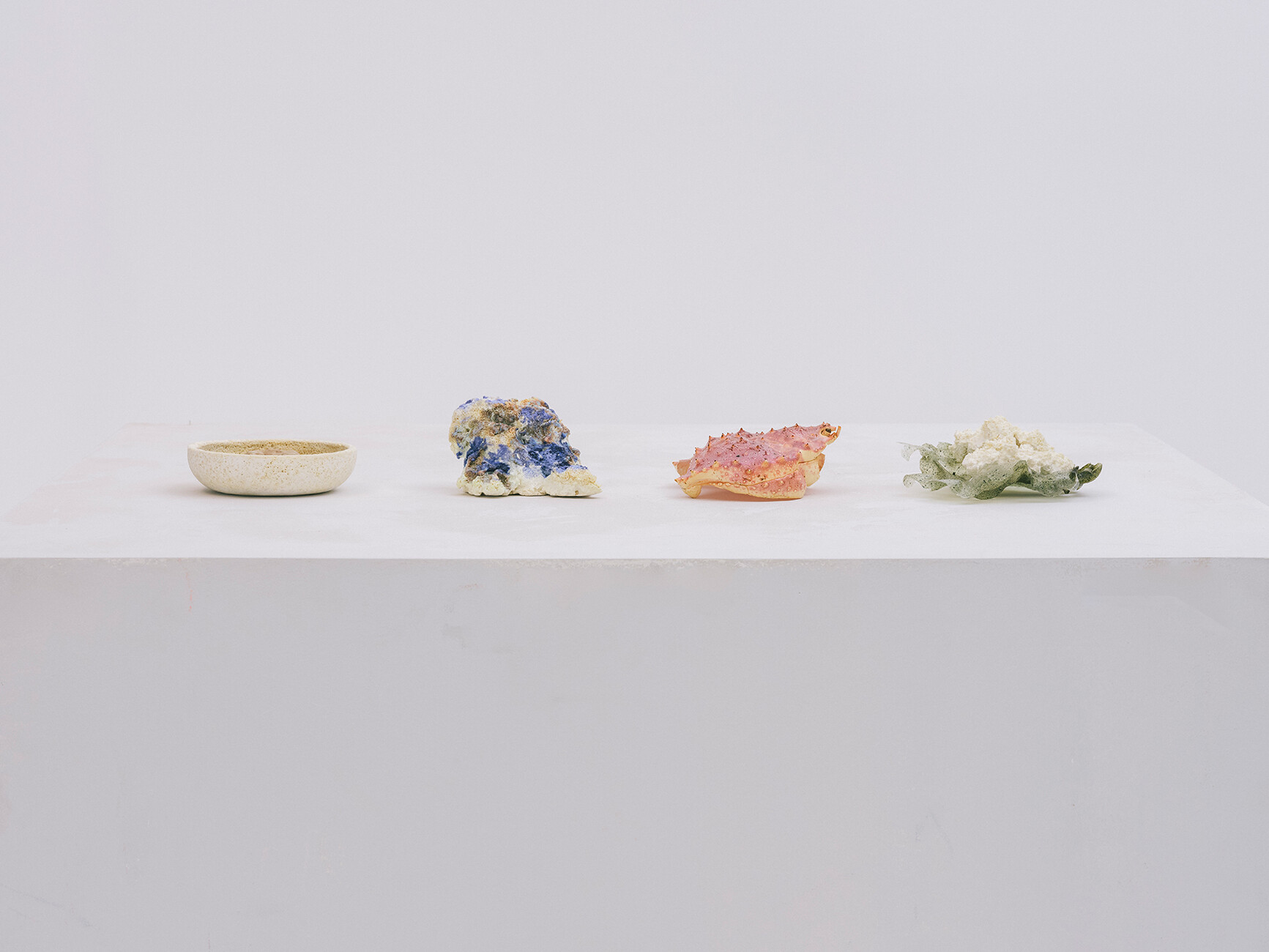YOUNG TALENTS
Rethinking systems
Anika Paulus: You work as a designer, researcher, design and art consultant, and also as a lecturer, and you founded the Natural Material Studio in 2019. How did you find your path?
Bonnie Hvillum: I’m an interaction designer by training first, so human interaction with the world runs through all aspects of my work. Everything we encounter has some kind of materiality – that’s the starting point. Encountering the philosophy of systems theory while a student was an important turning point for me: understanding that we have limited resources, and that we need to listen to all the voices within our system. So when I started the Natural Material Studio, I invested a lot of time in research, contacts, and swapping knowledge within the growing materials community in Europe. I also participated in a program for materials designers in Barcelona, and everything else developed from there.
Does the Natural Material Studio also adopt this collaborative aspiration?
Bonnie Hvillum: Yes, we want to bring people together and create a strong community. Materials design is a growing industry, but there are still too few educational opportunities, hence its importance as a serious design field is always a topic in my lectures and talks. We have also launched an online education platform to share our knowledge on local, bio-based materials and, for example, their use for ceramics. Course participants from around the world each bring a local material aspect from their research to the discussion, and this is important because we need to make our use of materials more local. This cultural, anthropological dimension is almost more interesting to me than the materials themselves.
But the focus of your work is on the development of future-oriented materials?
Bonnie Hvillum: Of course, the Natural Material Studio is about materials, surfaces, textures, and technical development, but for me, the focus is always on people and points of interaction – touch, feelings, and senses. The experience of materiality can lead to greater connectedness in the here-and-now, and that’s why our work is so trans-disciplinary; it’s not about being categorized as fashion, furniture, architecture, or art. The first joint installation with the Frama design studio demonstrated particularly well, I believe, the opportunities our materials offer. In the course of the collaboration, we questioned how people perceive materials, what materials really are, and what they can become.
The collaborations with Frama and Calvin Klein, but also Empirical Spirits and Noma, show this interdisciplinarity. How do such differing projects come about?
Bonnie Hvillum: It’s different for every project; from specific orders to funding programs for which we bring the right people together, through to a research project of our own. For example, I spent some time thinking about mussels as a source material and then approached the international Michelin-starred restaurant Noma in Copenhagen with a vision. Noma is probably the best place to say, I don’t know where it’s going yet, but I want to find out. Together, we approached the development in a very open and unbiased way. We allowed the process to be driven by the properties and aesthetics of the material and asked ourselves what made sense for the restaurant. I saw technical possibilities for clay, which we then developed from the waste shells and shellfish and then took forward to use as the base for tableware.
So at the beginning there is often a supposed waste product and the question of what happens to it?
Bonnie Hvillum: Yes, that’s the main driver: repurposing things and putting them back into circulation. My creative approach is always ambitious, but playful. It’s like looking in the fridge in your kitchen – I have carrots and beets – what can I make out of that? For me, the scientific and creative process is about making connections between things that you wouldn’t necessarily think would go together; tinkering with something, puzzling over it, and training your mind to that effect.
The Natural Material Studio’s work and materials show a deep fascination with honest, unprocessed, organic raw materials. What is your relationship with nature?
Bonnie Hvillum: I have a great curiosity and respect for the system we live in. Nature is just incredible. That may sound trite, but I’m consistently amazed by what we can find in it and what it can do. In my work, nature provides exciting constraints. Synthetically, we can make anything we want, all colors and shapes, but when you work with nature there are suddenly limitations. How can I deal with them, work with them? Always pausing, rethinking, and finding new ways – that’s important for me as a designer. If everything is possible all of the time, it’s too easy.
The discussion about material innovation and impact often centers on the issue of scalability...
Bonnie Hvillum: Currently all the materials we design and produce are handmade, it’s very much an artisanal process. Initially, we thought that we would just develop the materials and then inject them into an industrial process, but with every project, we produce more and in less time. It’s incredibly fascinating and shows that we need to take craft and artisanal processes more seriously. For us, it’s also about questioning existing structures: Everyone is striving for industrialized processes, faster production, growth, and consumption, while we see a tendency toward something slower. Craftsmanship takes much more time and energy, and it’s more meaningful. A genuine, deep connection to materials and objects that surround us – that’s what’s most sustainable.
Are you seeing a change in demand for your materials and services and a desire for honest change?
Bonnie Hvillum: There’s a lot of momentum for our issues right now, which is great. In many industries, regulations and guidelines are increasing, which is a real driver for change. We’re now being asked, for example, about life cycle analysis, which is new, and I can talk about all the components of the materials involved here because, as I said, it’s a very artisanal process. I’m at a crucial point right now in navigating the Natural Material Studio through commercial requests and new demands. In the design world, unfortunately, far too few processes are still being changed, and instead people are just replacing materials and continuing to produce as before. When we as designers put new things into the world, we are not just designing objects or materials, we are designing a system. And that has to be thought about and designed very carefully. We need to entirely rethink how we make things, consume things, and what happens afterwards. We need a rethinking of whole systems, not just the materials. That’s the only way we’ll achieve real change.




